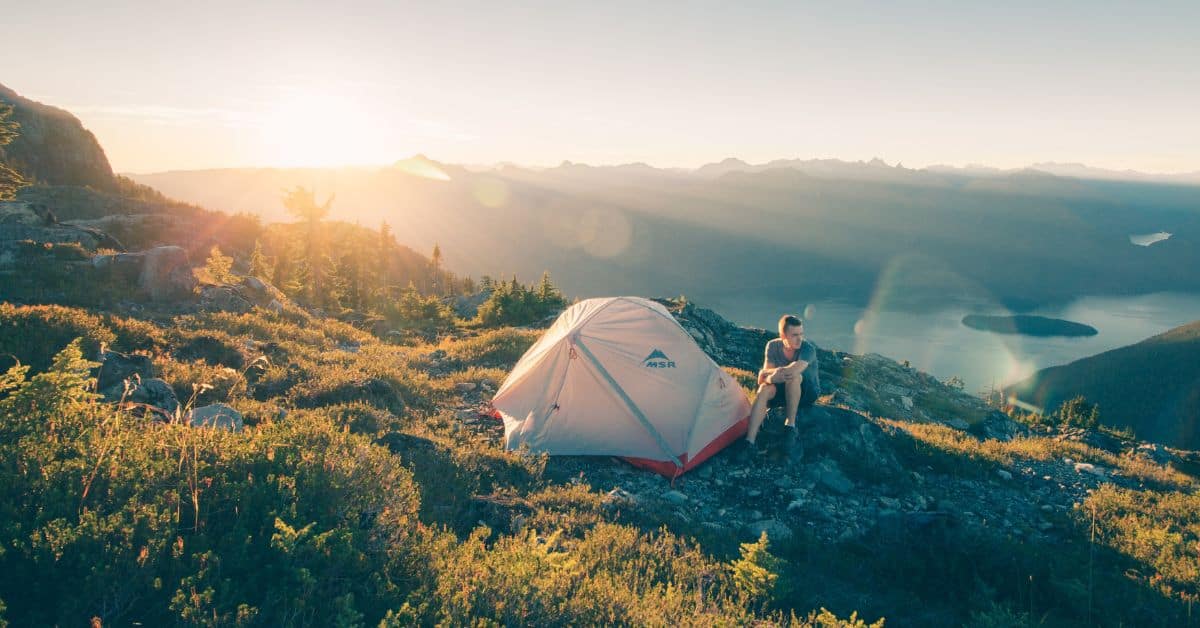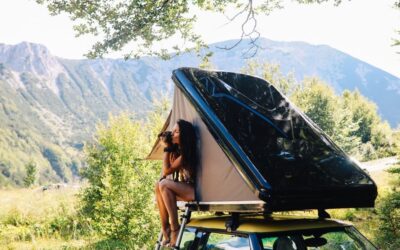Ever felt the urge to ditch the crowded campgrounds, dive deep into nature, and sleep under a starlit sky? That’s wild camping for you – a world away from marked pitches and morning queues for the shower block. Having spent many nights like this myself, I can attest to the unparalleled joy of finding that untouched spot beneath the stars.
If you’re wondering where to start or what the fuss is all about, you’re in the right place. Welcome to your beginner’s guide to wild camping!
Ready to dive in? Let’s go!
Disclaimer: If you make a purchase via the links on our site, I may earn an affiliate commission at no additional cost to you. You can read my affiliate disclosure in the privacy policy. Thanks for your support!
What is Wild Camping?
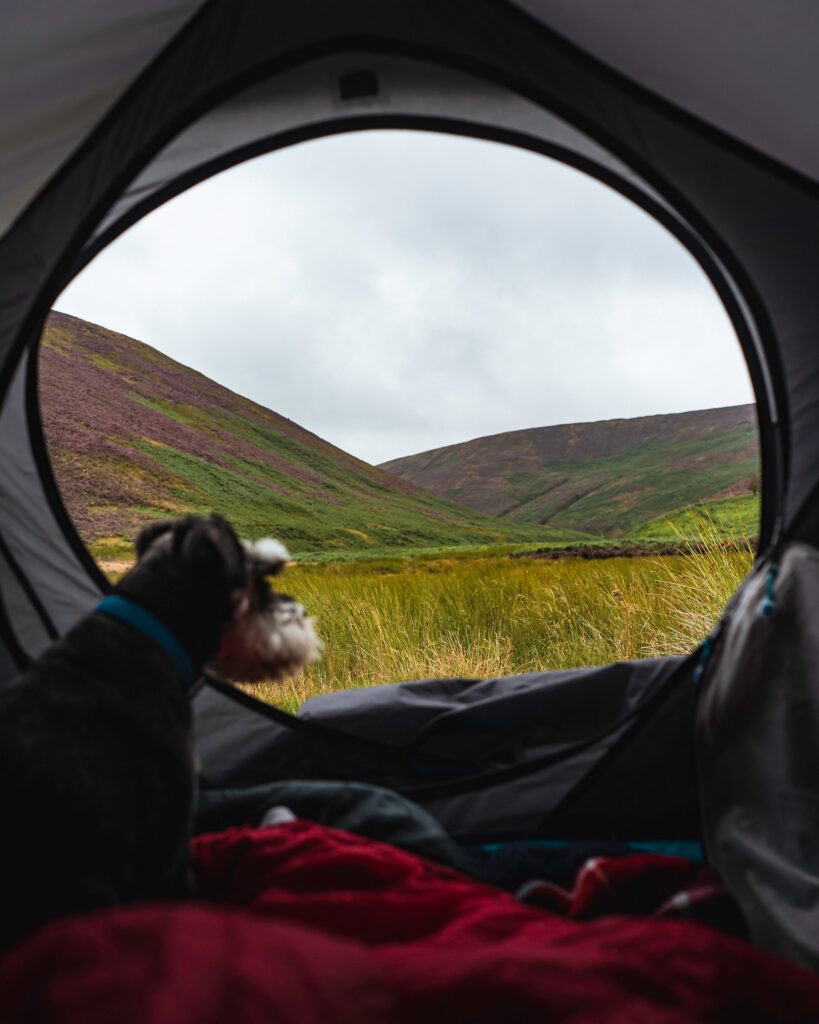
So, what exactly is wild camping? It’s camping in its purest and most adventurous form. Instead of sticking to crowded campgrounds with marked pitches, wild camping takes you off the beaten path. It’s pitching your tent or setting up your hammock in a place that feels just right to you, whether in a forest clearing, beside a tranquil lake, or on a mountain with endless views.
Wild camping is about freedom and adventure, but it also comes with responsibilities like “Leave No Trace” and being mindful of local wildlife and the environment. It’s about being self-reliant, carrying everything you need with you, and embracing the beauty and challenges of the wild.
Sounds exciting, right?
But…
Is Wild Camping Legal in the UK?
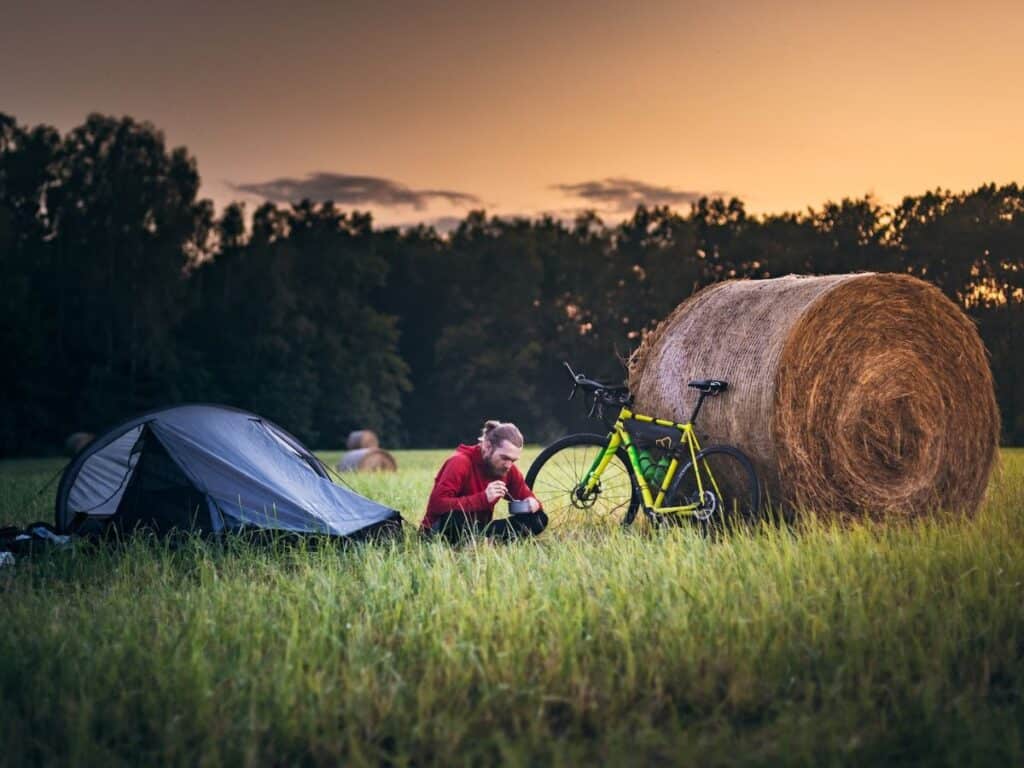
Ah, the legal side of wild camping. It’s a question I hear quite a bit, and for a good reason. So, is wild camping legal in the UK and where can you wild camp legally?
Right now, trespassing, which includes wild camping, isn’t considered a criminal act, but rather a civil wrong. While the law doesn’t specifically permit wild camping, it’s not exactly illegal either. It’s a bit of a grey area. This might seem like a fine line, but it means that setting up your tent on a hillside won’t likely land you with a criminal record.
Let’s break it down.
Wild Camping in England
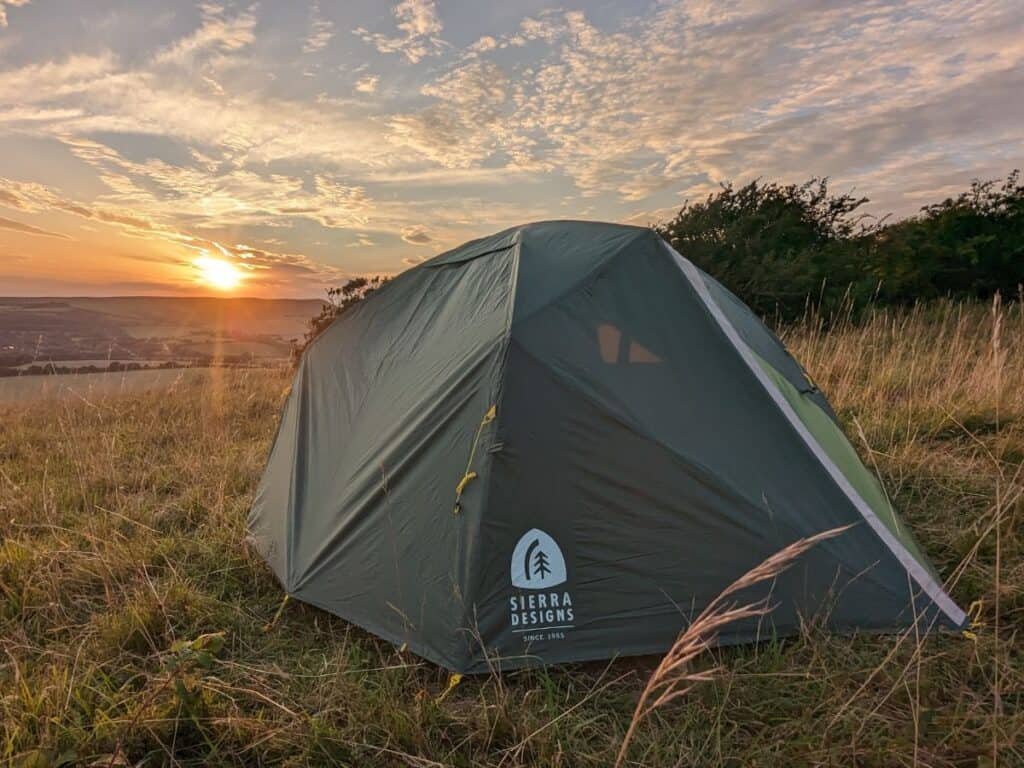
In England, wild camping is generally not permitted on private land without the landowner’s permission. There are exceptions, though, like Dartmoor National Park, where wild camping is allowed in specific areas.
Wild camping has a long-standing tradition on Dartmoor, assumed to be allowed under the Dartmoor Commons Act since 1985. It made Dartmoor the only place in England where camping was allowed without the landowner’s permission. However, this right to pitch camp was temporarily lost in January 2023 due to a ruling in a case brought by two wealthy landowners. Fortunately, Dartmoor National Park won a successful appeal, and the ruling was overturned in July of the same year, restoring the right to wild camp in this unique location.
Winning this case in Dartmoor was just the first step in an even greater campaign. The victory resonates with the goals of the Right to Roam movement, who are actively campaigning to bring a Right to Roam Act to England. Their mission aims to provide millions more people with easy access to open space, recognizing the significant physical, mental, and spiritual health benefits that connection with nature brings.
To learn more about this important movement and how you can get involved, click here.
Wild Camping in Wales
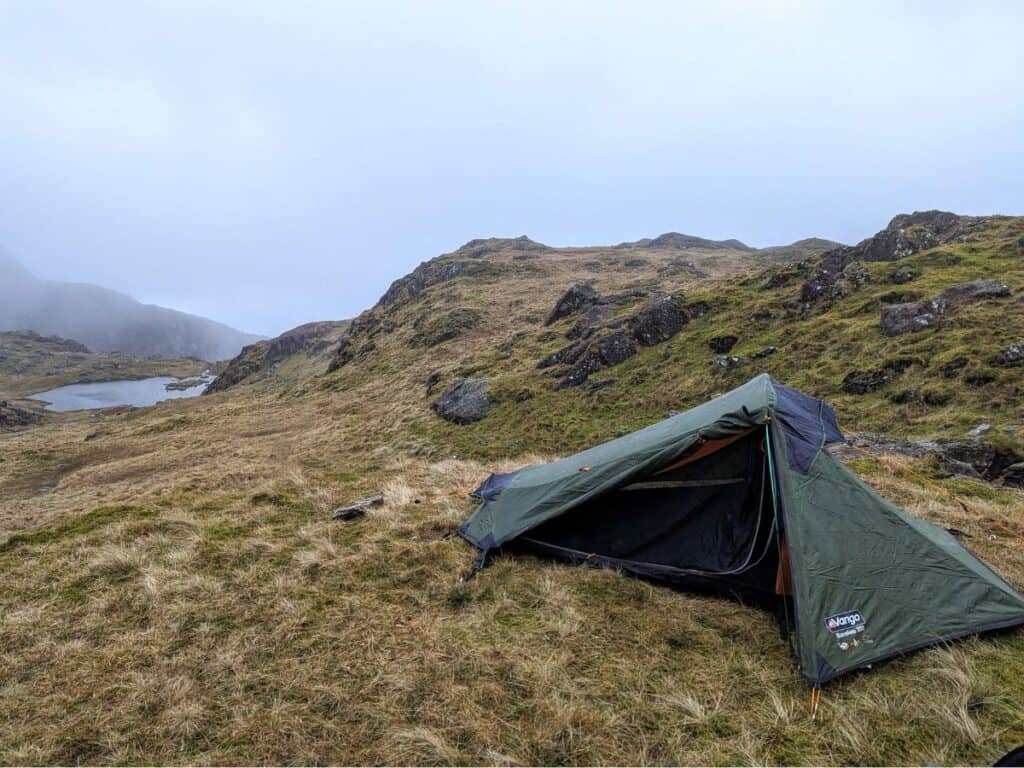
The situation in Wales is similar to England, with wild camping typically requiring the landowner’s consent. Some places may accommodate wild camping if you ask politely and follow the rules.
Although not strictly allowed, wild camping is generally tolerated in certain areas of Wales such as Snowdonia National Park. It’s just important to remember to always be respectful and follow the golden rule, more on those further down.
Wild Camping in Scotland
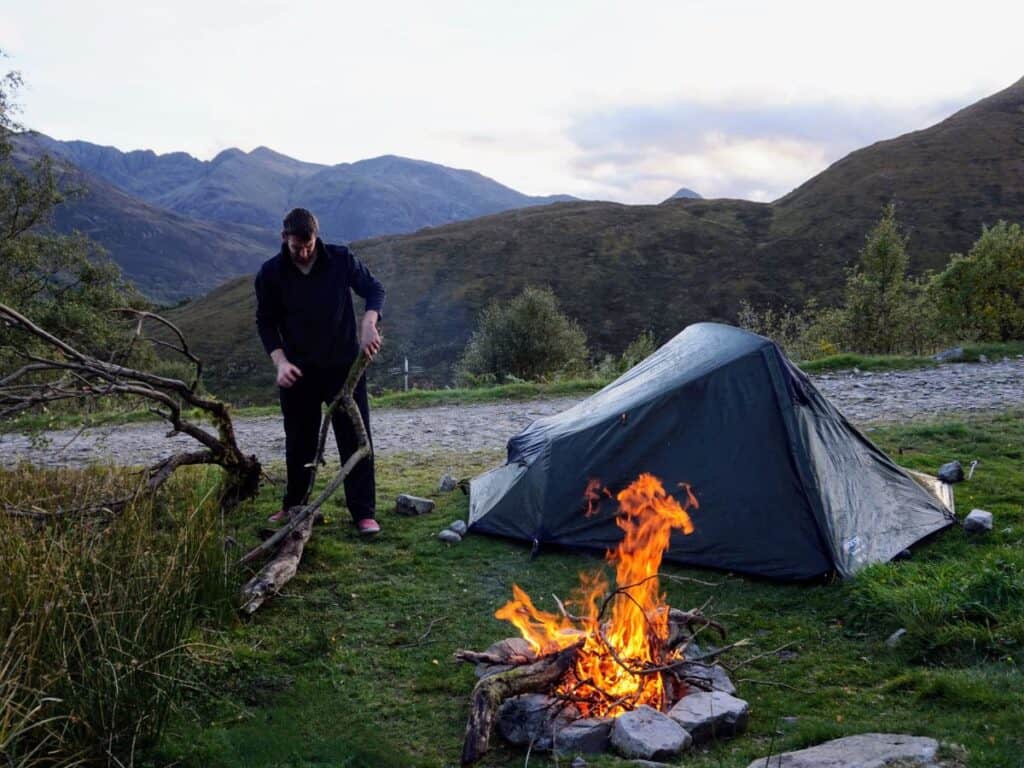
In Scotland, the situation regarding wild camping is more lenient, offering a more accessible experience for outdoor enthusiasts. Thanks to the Land Reform Act, wild camping is legal in most unenclosed land, a right that celebrated its 20th anniversary in 2023. This legislation has allowed generations of campers to connect with Scotland’s breathtaking natural landscapes, fostering a deeper appreciation for the environment.
The right to wild camp comes with responsibilities, as outlined in the Outdoor Access Code. The code emphasizes principles such as respecting the interests of other people, caring for the environment, and taking responsibility for one’s own actions. Key aspects include leaving no trace of your campsite, avoiding areas with livestock, and keeping a safe distance from buildings. The code encourages responsible behaviour that ensures everyone can enjoy Scotland’s natural beauty without detriment to the land or others.
This level of access and respect for the natural environment is what campaigners hope to gain in England and Wales through a Right to Roam Act. By adopting similar principles and legal structures, the goal is to extend the joys and benefits of wild camping to more people, fostering a nationwide appreciation for the great outdoors.
Wild Camping in Northern Ireland
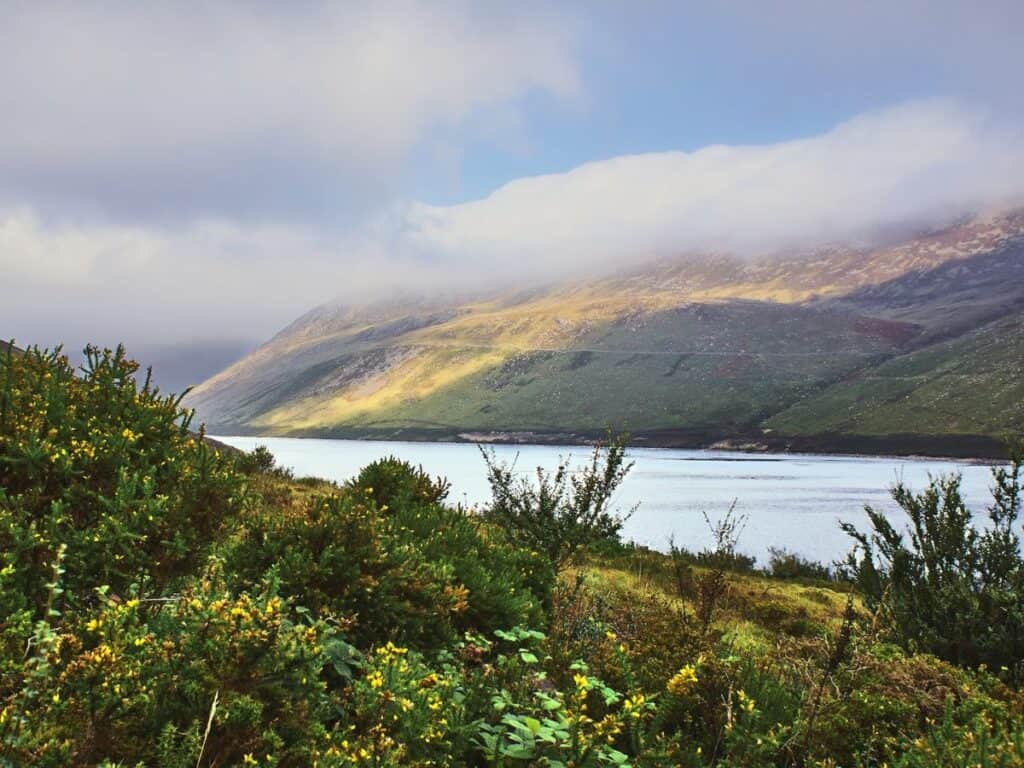
In Northern Ireland, wild camping operates on principles similar to those in England and Wales, generally requiring the landowner’s consent. While this may seem restrictive, many landowners are open to wild camping if approached respectfully with a commitment to follow the golden rules of wild camping.
While the legal structure does limit wild camping, with proper planning and a respectful approach, Northern Ireland’s diverse landscapes, from coastal vistas to rolling hills, can still be explored and enjoyed through wild camping. It’s all about knowing where you can camp safely, and ensuring that you adhere to the local rules and customs.
Pro tip: Many landowners are quite accommodating if you ask politely and assure them that you’ll follow the golden rules of wild camping, like leaving no trace.
Keep in mind, laws and regulations can vary, and local rules should always be respected. So when planning your first wild camping trip or adventure in the UK, a little research and a respectful approach can go a long way.
What Happens if You Get Caught Wild Camping?

If you get caught wild camping in a place where it’s not permitted, the consequences are typically mild. Most likely, a landowner or authority figure will ask you to pack up and move along, and in some instances, they may request your personal details. However, you are not legally obligated to provide this information.
The key here is to be respectful and comply with the request to leave the area. Most importantly, do not return to that location, as doing so could create further issues.
As a seasoned wild camper myself, I’m still yet to be discovered while wild camping. Unless you count the occasional flock of sheep? If done correctly, following the wild camping rules like “leave no trace,” you shouldn’t experience any problems. By being respectful of the land and the principles of wild camping, it’s possible to enjoy this unique experience without conflict or legal concerns. It’s all about knowing where to go, how to behave, and leaving the area as you found it.
At the end of the day just remember, wild camping is considered a civil wrong, not a criminal offense, so legal consequences like fines or a criminal record are unlikely. Just follow the rules of wild camping, be courteous, and enjoy your adventure responsibly.
Related Article: What is the Punishment for Wild Camping in the UK?
Best Places to Go Wild Camping in the UK
The UK is a haven for outdoor enthusiasts, offering some of the most stunning and diverse landscapes in Europe. With 15 national parks scattered across the region, from the rugged hills of Scotland to the tranquil moors of Devon, there’s a plethora of spots that provide an ideal backdrop for wild camping.
Dartmoor National Park, England
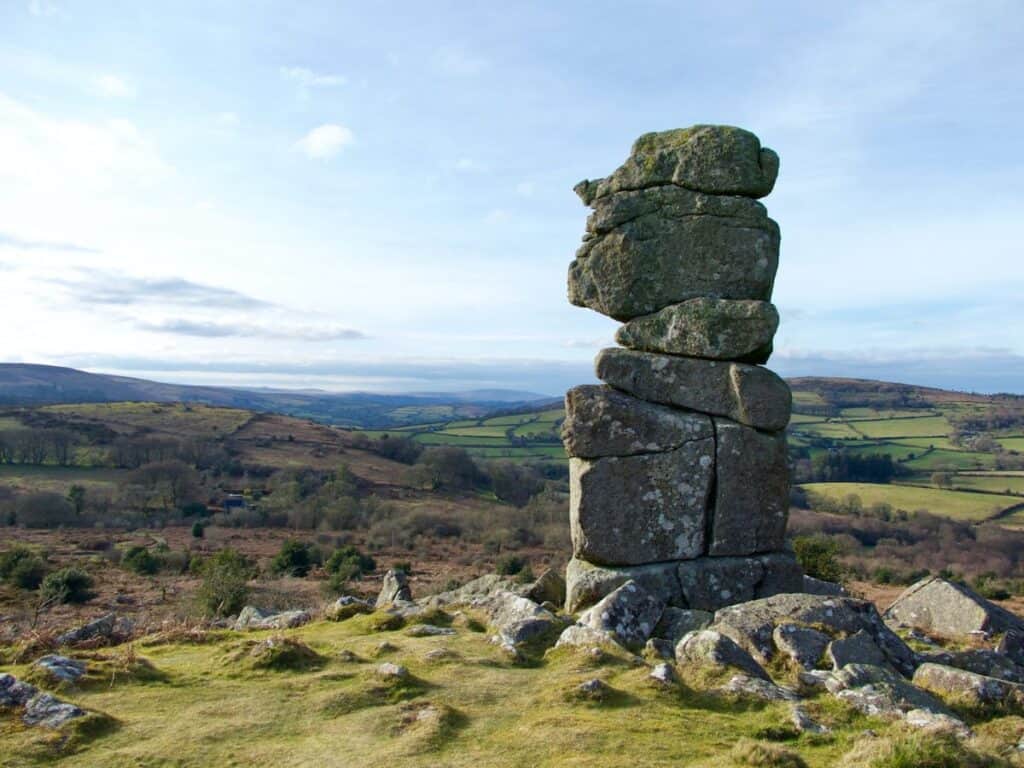
Dartmoor National Park is famous for its wild beauty, open moorlands, and captivating landscapes. Offering a diverse range of terrains and breathtaking views, it’s a favourite destination for those seeking a truly wild and unique camping experience in England.
Brecon Beacons, Wales
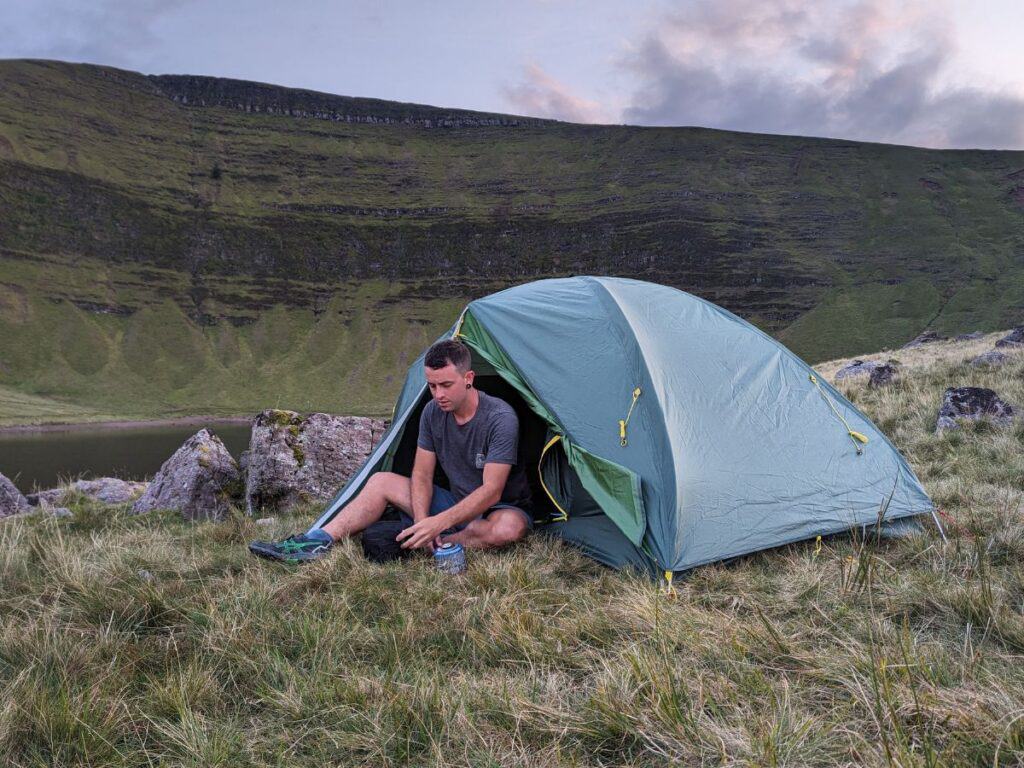
The Brecon Beacons showcases rugged terrains and picturesque views. With a plethora of hiking trails, this part of Wales is a perfect location to immerse yourself in the wilderness.
Snowdonia National Park, Wales
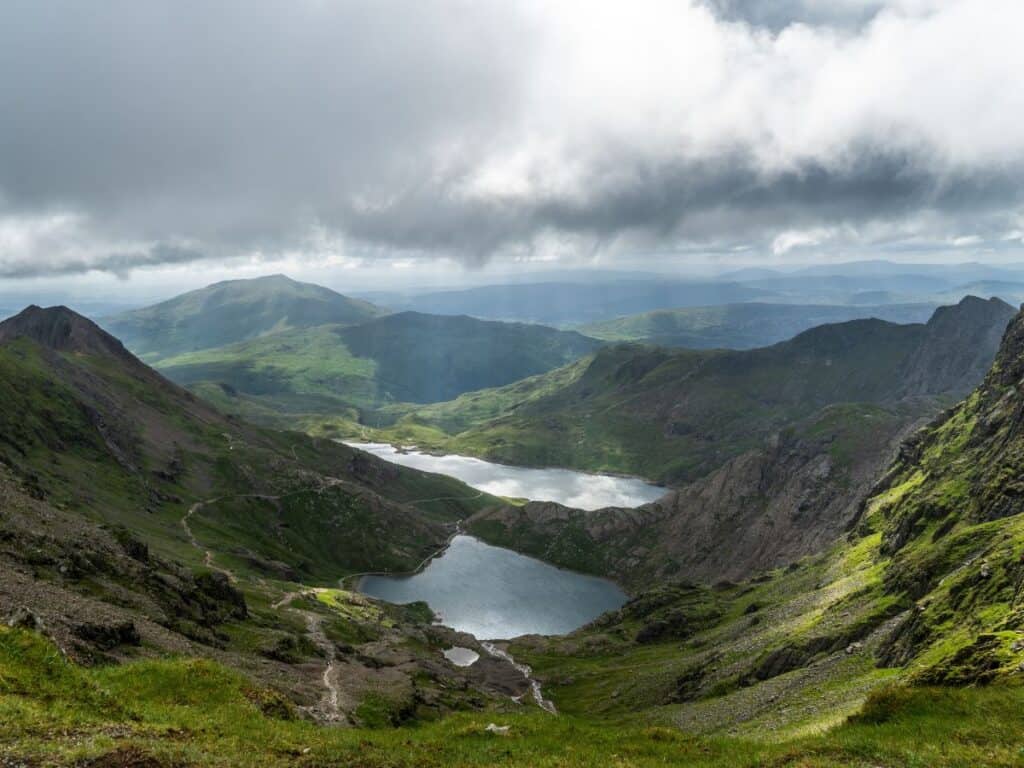
A paradise for hikers and wild campers alike, Snowdonia National Park is filled with towering peaks and serene lakesides. It’s a must-visit destination for those who want to experience Wales’ breathtaking natural beauty.
Intrigued by what Wales has to offer? Discover a more in-depth guide to all the best places to go wild camping in Wales here.
The Lake District, England
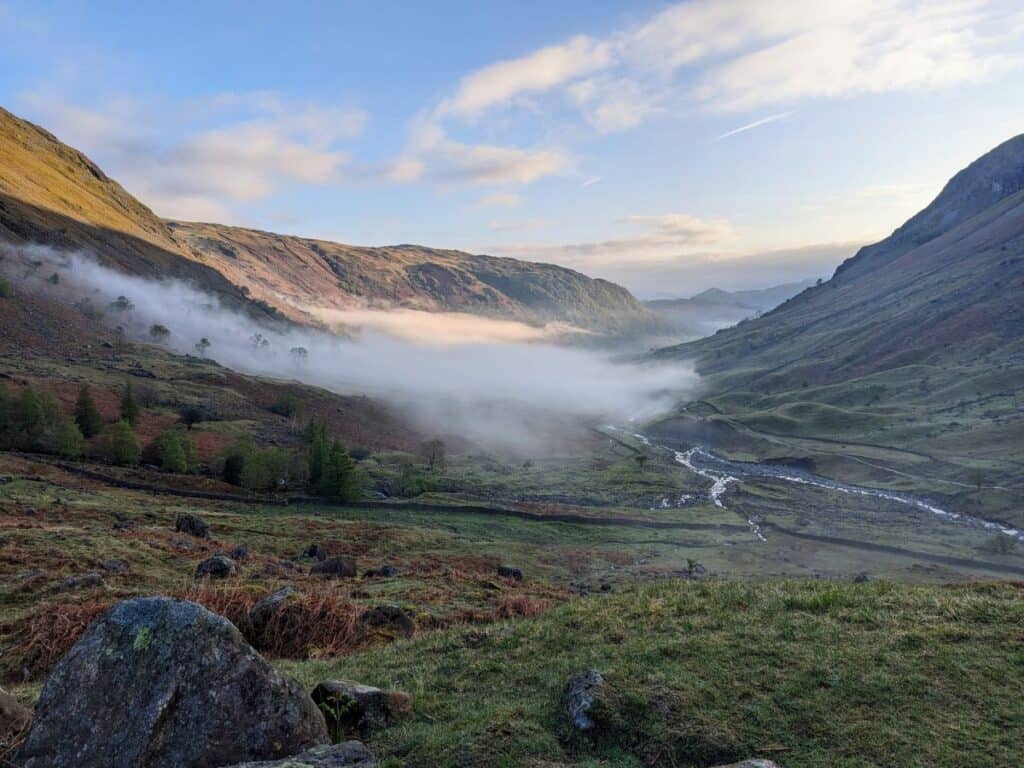
Renowned for its breathtaking lakes and rolling hills, The Lake District offers an opportunity to camp beside some of the most beautiful waters in the UK. This region is perfect for those looking for tranquillity amid stunning scenery.
Discover my top 10 spots for wild camping in the Lake District here.
The Yorkshire Dales, England
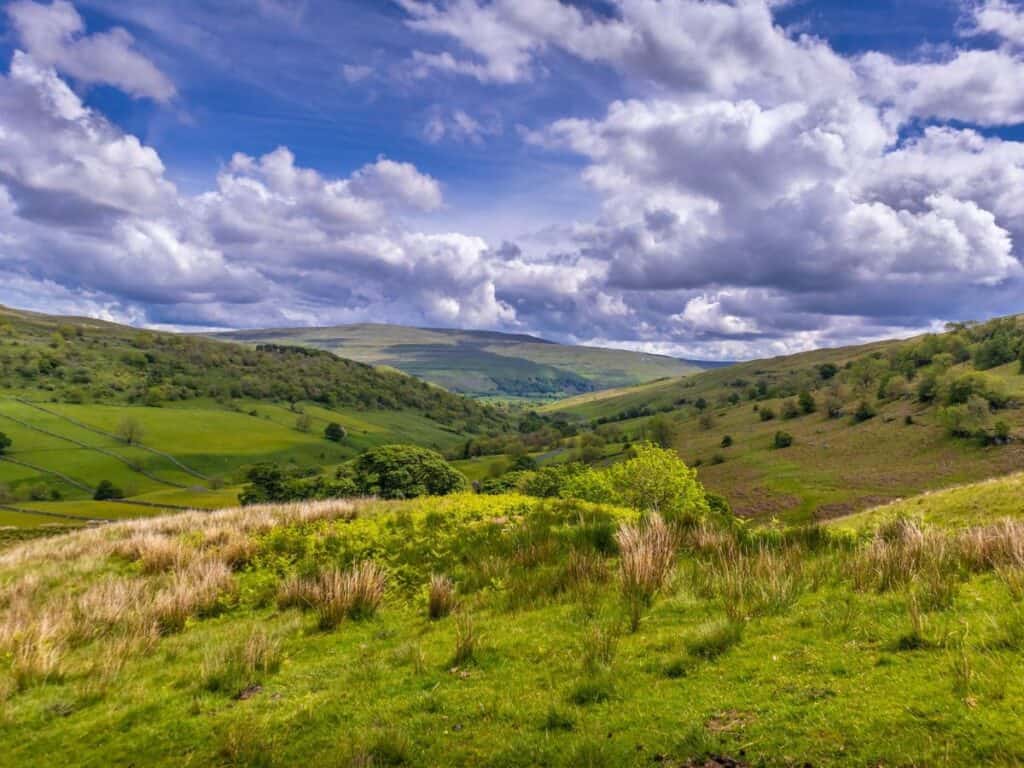
Featuring expansive moorlands and striking valleys, the Yorkshire Dales presents an ideal backdrop for wild camping. This location is perfect for those who love exploring remote areas and enjoying unspoiled landscapes.
Peak District National Park, England
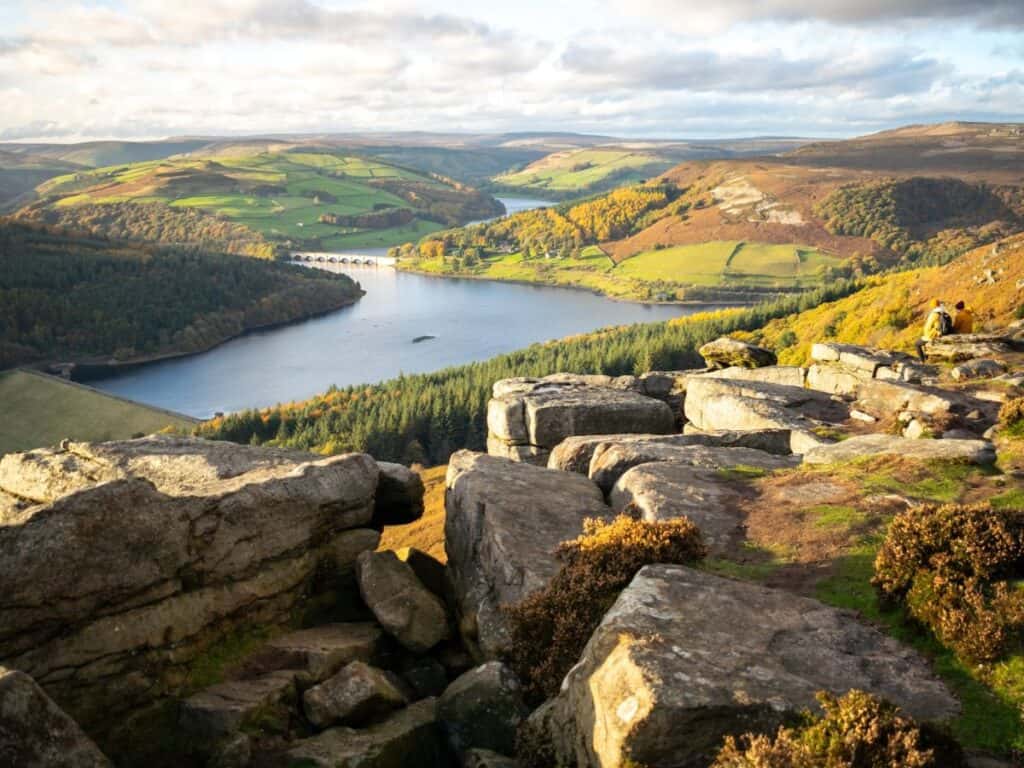
A haven for trekkers and wild campers alike, the Peak District National Park is adorned with rolling hills and tranquil valleys. It’s a must-visit destination for those looking to experience England’s captivating natural splendour.
Isle of Mull, Scotland
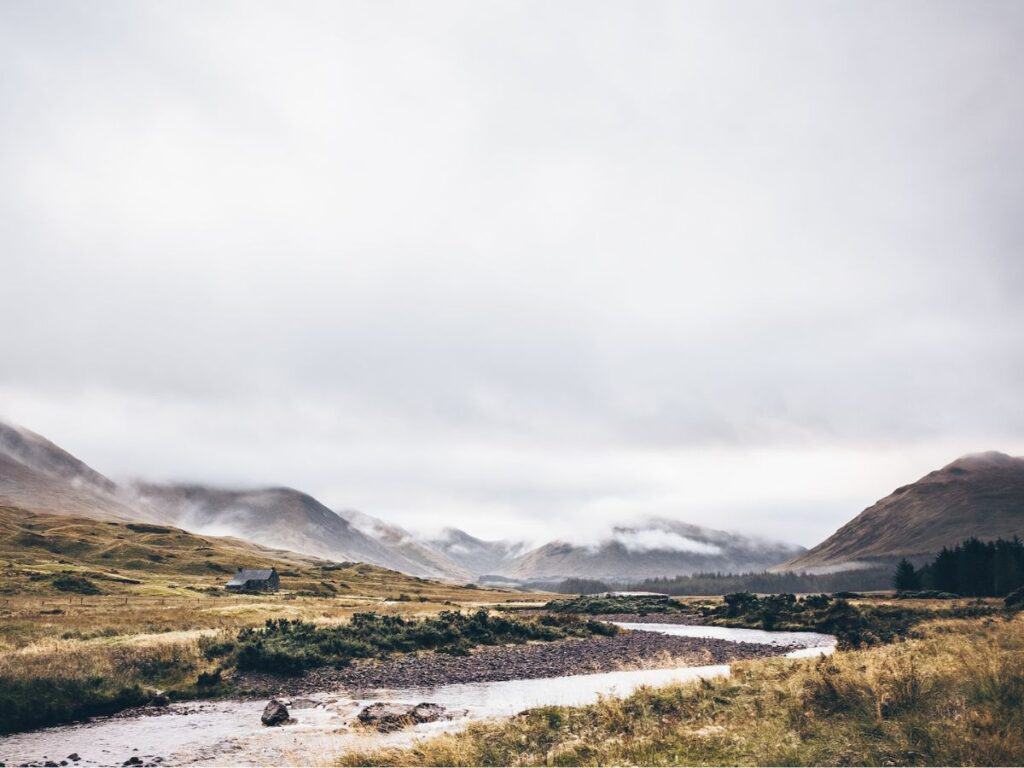
From rugged cliffs to gentle beaches, the Isle of Mull boasts a diverse landscape. It’s a fantastic place for anyone eager to experience the wild beauty of Scottish islands.
Cairngorms, Scotland
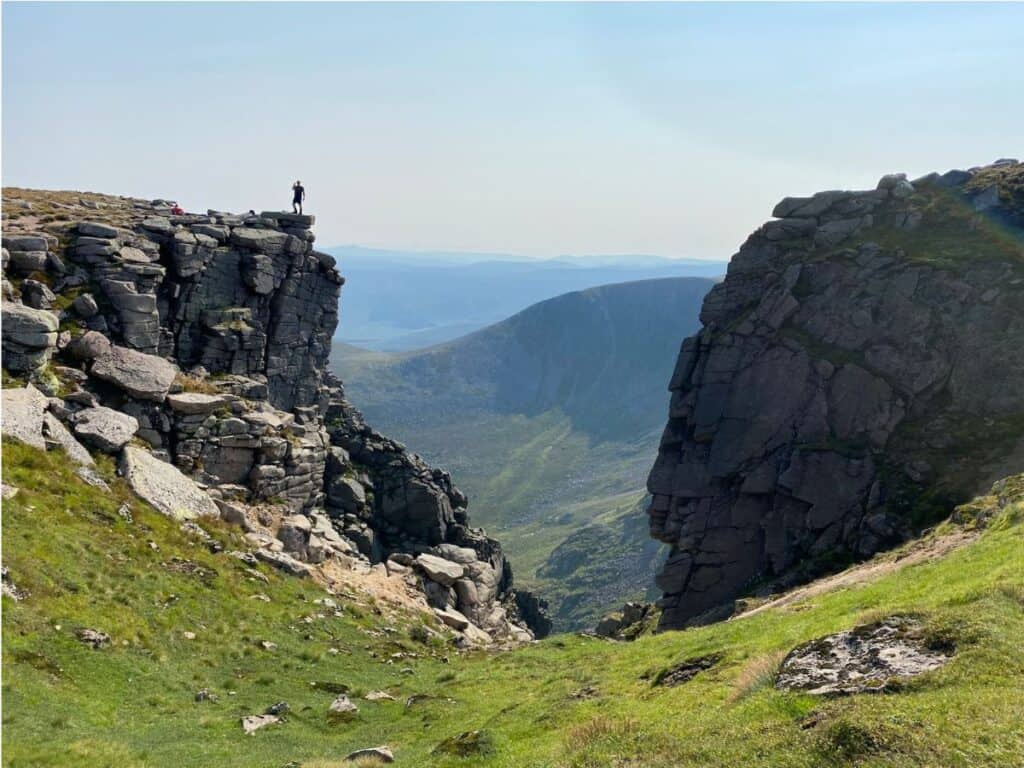
Home to some of the UK’s highest mountains, the Cairngorms offers dramatic landscapes that will captivate any wild camper. It’s an unmatched destination for those wanting to explore Scotland’s unique mountainous regions.
Loch Lomond, Scotland
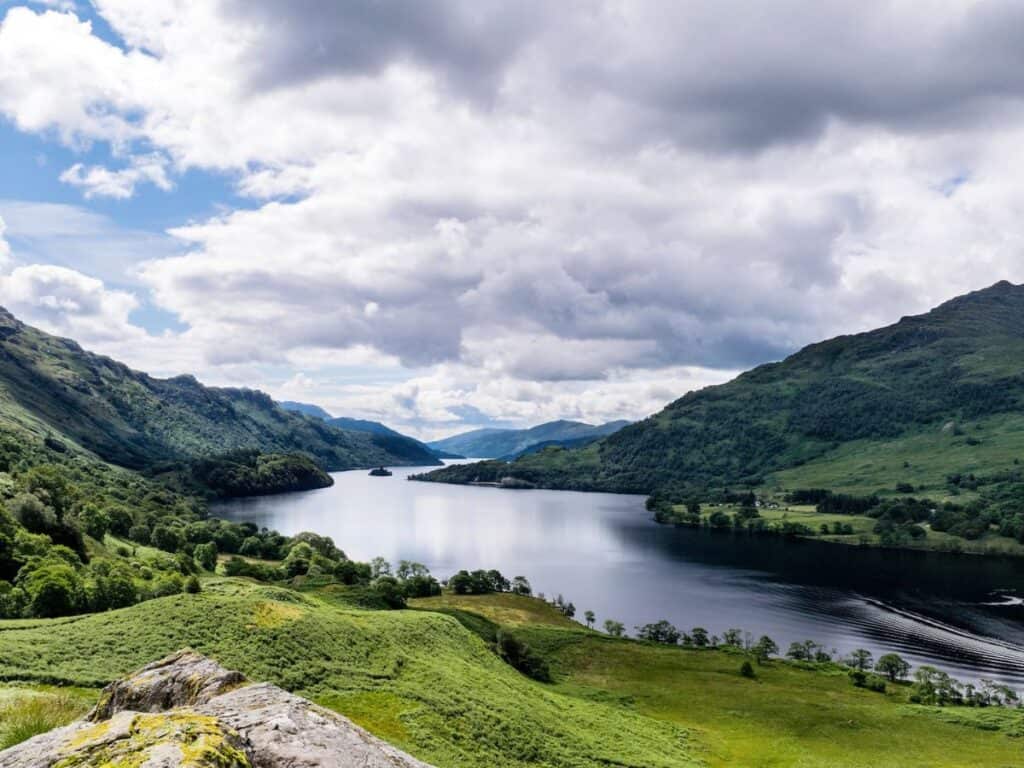
Located within the Trossachs National Park, Loch Lomond offers everything from waterside spots to wooded areas. With incredible views and an array of camping opportunities, this location is a favourite for many adventurers.
Discover the 10 Best Places for Wild Camping Scotland.
How to Choose the Perfect Wild Camping Spot
Choosing the perfect wild camping spot is an essential part of the adventure, and it requires some thought and planning. Here’s how you can find the right spot for your wild camping experience:
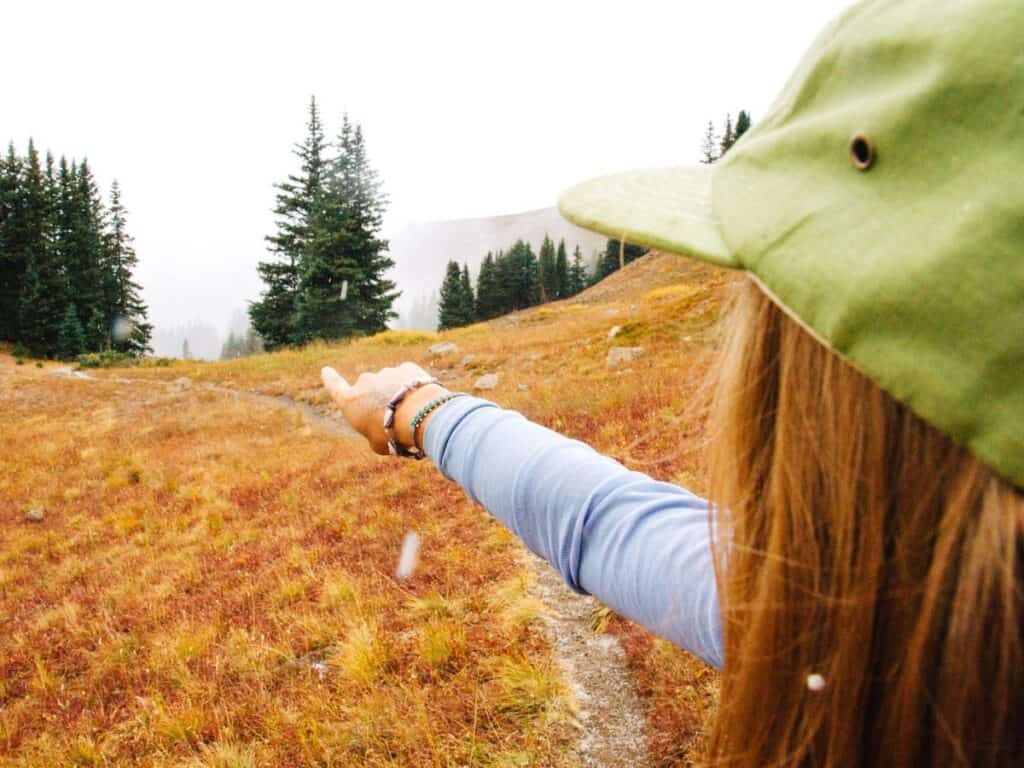
Consider the Landscape: Look for level ground that’s free from rocks and roots. Avoid camping in low-lying areas where water may collect if it rains, and stay clear from cliff edges or unstable ground.
Check the Weather: Always check the weather forecast for the area you plan to camp in. This will help you choose a spot that is sheltered from prevailing winds or any expected bad weather.
Proximity to Water: Being near a water source is convenient, but not too close, as it may attract insects or lead to flooding in heavy rain. Always camp at least 200 feet from lakes and streams to protect riparian areas.
Respect the Environment: Choose a spot that has minimal impact on the surrounding flora and fauna. Stick to previously impacted areas, and avoid camping on delicate ecosystems like meadows.
Safety Considerations: Make sure you’re not camping near animal trails or in an area known for wildlife activity. It’s also wise to be aware of any local regulations or potential hazards in the area.
Accessibility: Consider how you’ll get to the camping spot and how close it is to trails or roads. You don’t want to camp directly on a trail or too close to a road, but access is essential.
Views and Aesthetics: Think about what you want to see when you wake up. A spot with a beautiful view can enhance your wild camping experience. Just remember to balance aesthetics with safety and environmental considerations.
Leave No Trace: Always follow the Leave No Trace principles, which include minimizing campfire impact, and packing out everything you pack in.
Ask a Local or Experienced Wild Camper: If you’re unfamiliar with an area, reach out to local authorities or experienced wild campers. They can provide valuable insights and suggestions for camping spots.
Your Personal Preferences: Consider what’s essential to you in a camping spot. Whether it’s privacy, proximity to hiking trails, or other personal preferences, make sure the spot aligns with what will make your experience enjoyable.
Remember, part of the fun and adventure of wild camping is exploring and finding that perfect spot. Take your time and enjoy the process, keeping these considerations in mind to ensure a safe and enjoyable experience.
What Wild Camping Equipment Do I Need?
Here’s a brief overview of the essential wild camping gear you’ll need:
Wild Camping Shelters
Choosing the right tent or shelter for wild camping is essential, as it protects you from the elements and ensures a comfortable night’s sleep.
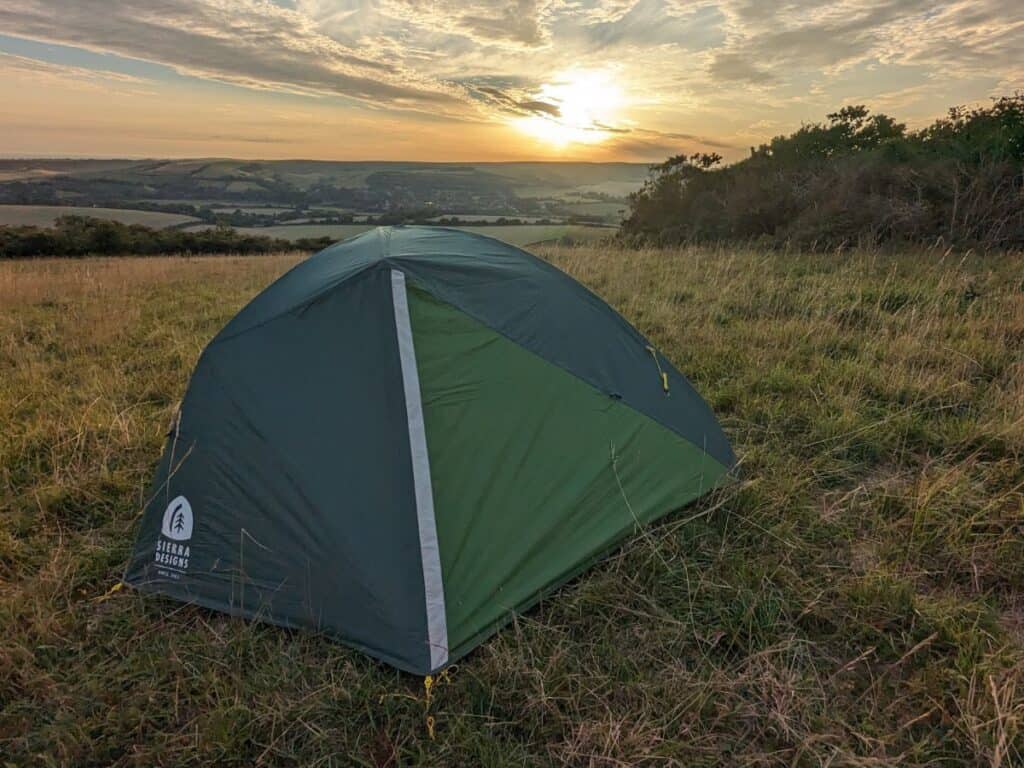
Wild Camping Tents: Provides complete protection from weather and insects; There are many great backpacking tents for wild camping so make sure to choose one suitable for the season and environment.
Hammocks: Great for lightweight camping, offering off-ground sleeping comfort.
Bivvy Bags: Minimalistic shelter that encloses the sleeping bag for extra weather protection.
Tarps: Versatile cover that can provide additional protection or be used as a simple shelter.
Sleep System
Your sleep system is pivotal to a good night’s rest in the outdoors, keeping you warm and insulated from the ground.
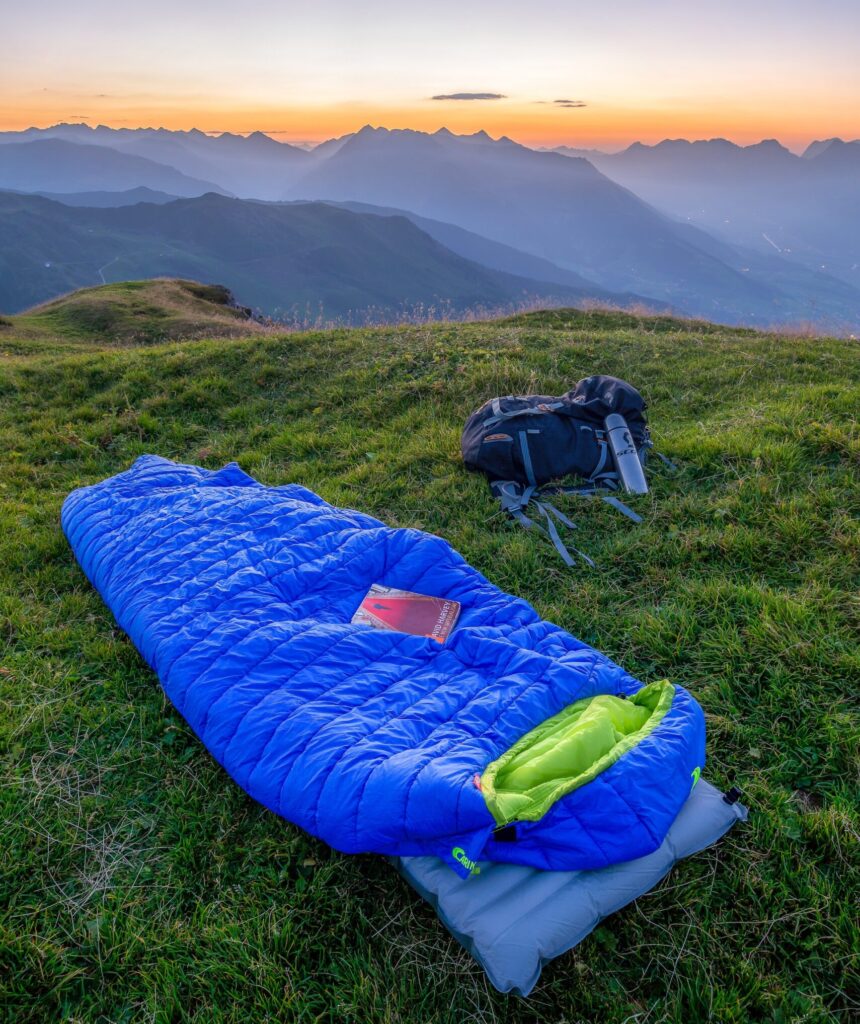
Sleeping Bags: Keeps you warm at night; ensure it’s suitable for the temperatures you’ll be facing.
Sleeping Mat: Provides insulation and cushioning from the hard ground.
Sleeping Bag Liner (optional): This adds an extra layer of warmth and comfort, and can also keep your sleeping bag clean.
Wild Cooking
Preparing and enjoying meals in the wild requires the right cooking equipment, combining convenience and function.
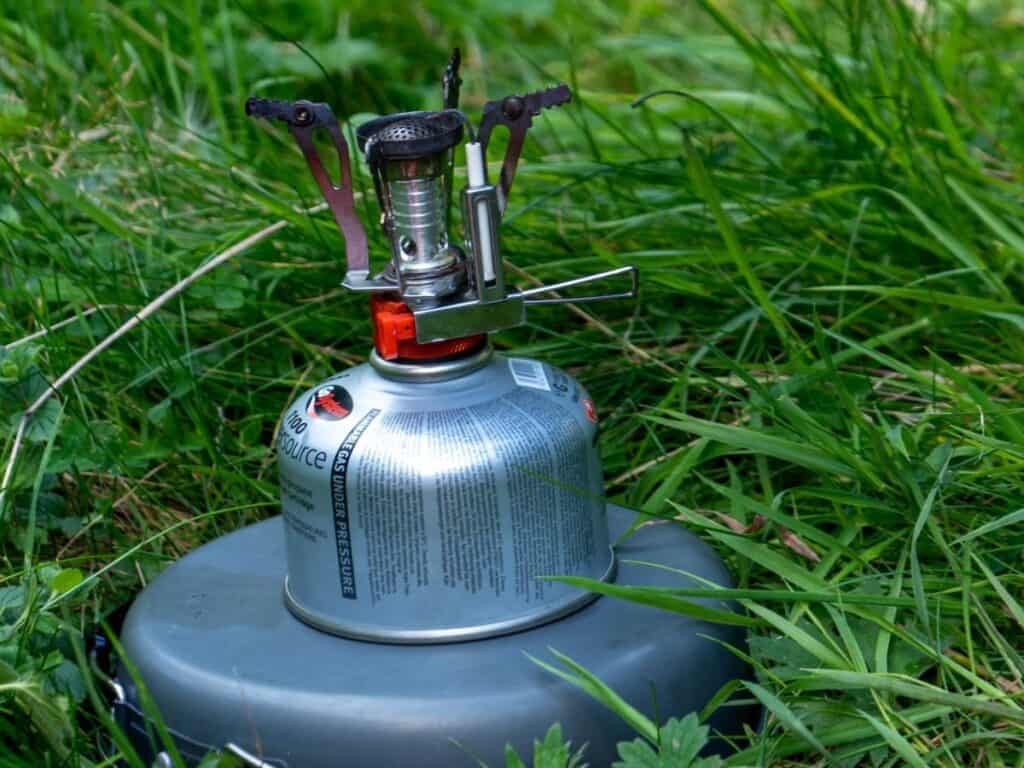
Camping Stove: Enables cooking in the outdoors; choose between gas, liquid fuel, or portable wood stoves.
Pots and Pans: Essential for cooking meals; consider lightweight and durable materials.
Freeze Dried Meals(optional): Convenient and lightweight option for nourishing meals.
Water: Ensure you have a system for carrying and purifying water.
Mug: A compact mug is a must for enjoying hot drinks.
Cutlery (Spork): A spork combines a spoon and fork, saving space and adding convenience.
Hot Food Container (optional): Keeps your cooked meals warm, especially useful in cold conditions.
Other Items
These miscellaneous items round off your wild camping kit list essentials, providing support, safety, and ease as you explore the wild.
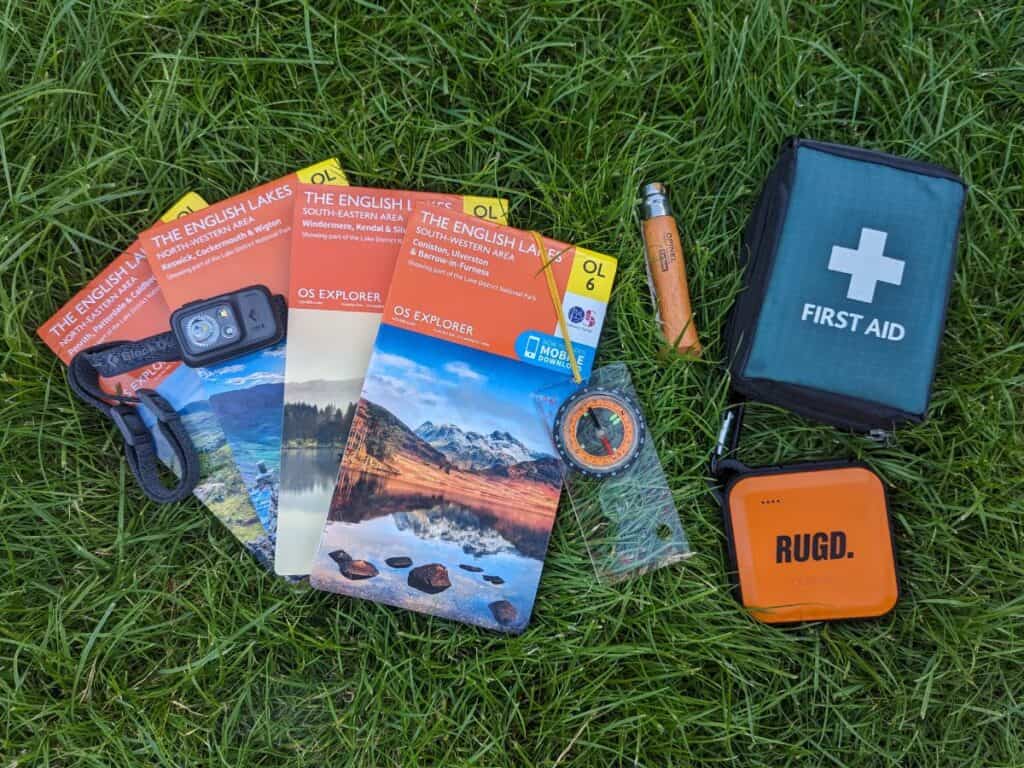
Backpack: Choose a comfortable pack that fits all your gear.
Head Torch: Essential for navigating and setting up camp in low light.
Map: Necessary for navigation, especially in remote areas. Don’t just rely on Google maps.
First Aid Kit: A compact kit with essentials for treating minor injuries and ailments.
Insect Repellent: Helps to keep biting insects at bay, enhancing your outdoor experience.
Rubbish Bags: Don’t forget these to ensure you leave no trace.
For a detailed guide on selecting the right wild camping kit, don’t forget to visit this comprehensive article on my blog.
How to Pack a Rucksack for Wild Camping
Packing a rucksack for a wild camping trip is an art that requires careful consideration of both what you’ll need and how to organize it efficiently. Here’s a step-by-step guide to packing your rucksack for a successful wild camping adventure:

Choose the Right Rucksack: Select a rucksack that’s appropriate for the duration and type of trip you’re planning. Consider factors like capacity, weight, and fit.
Start with the Essentials: Always pack the essential items first, such as your sleeping bag, shelter, and food. Place heavy items close to your back and near the middle of the rucksack to distribute weight evenly.
Add Clothing and Personal Items: Pack clothes and personal items in a way that keeps them accessible but protected. Consider using compression bags or packing cubes to save space.
Include Cooking and Navigation Tools: Don’t forget essential tools like a stove, utensils, map, and compass. Organize them in pockets or compartments where they can be easily reached.
Leave Room for Extras: Keep some space for extras like snacks, a camera, or a book. You’ll also want to leave room for water bottles or a hydration system.
Consider Weather and Terrain: Adjust your packing based on the weather and terrain you expect to encounter. Think about additional layers, rain protection, or specific gear for the landscape.
Use External Attachments if Needed: Utilize external straps or loops for items like trekking poles or a sleeping pad if they don’t fit inside the main compartment.
Review and Adjust: Finally, take a moment to review your packing and adjust as needed to ensure a comfortable fit and easy access to essential items.
For a detailed guide on how to pack your backpack efficiently, complete with visuals and expert tips, be sure to check out my comprehensive article on How to Pack a Backpack. It’s packed with insights to help you prepare for your next wild camping adventure!
8 Golden Rules of Wild Camping
These 8 simple and easy-to-follow principles are crucial for preserving nature and respecting others while enjoying the beauty of wild camping:
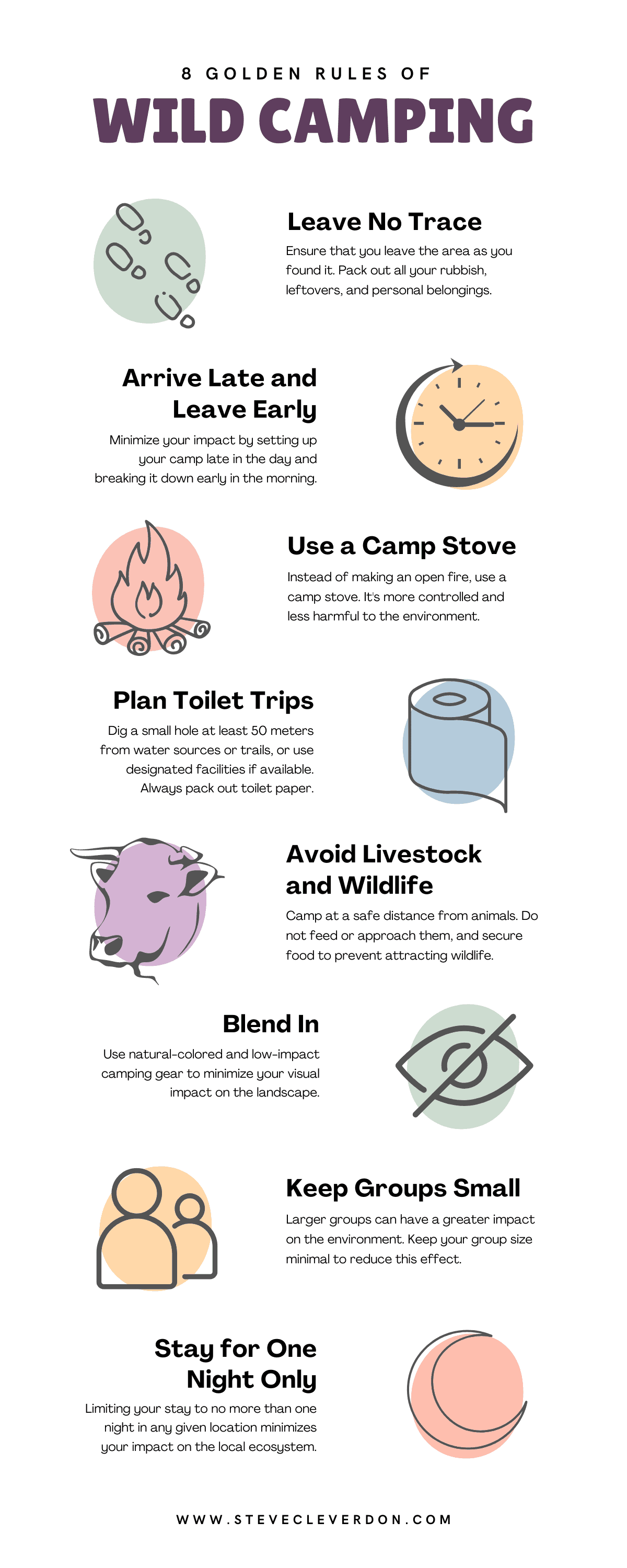
- #1 Leave No Trace: Ensure that you leave the area as you found it. Pack out all your rubbish, leftovers, and personal belongings.
- #2 Arrive Late and Leave Early: Minimize your impact by setting up your camp late in the day and breaking it down early in the morning.
- #3 Use a Camp Stove: Instead of making an open fire, use a camp stove. It’s more controlled and less harmful to the environment.
- #4 Plan Toilet Trips: Dig a small hole at least 50 meters from water sources or trails, or use designated facilities if available. Always pack out toilet paper.
- #5 Avoid Livestock and Wildlife: Camp at a safe distance from animals. Do not feed or approach them, and secure food to prevent attracting wildlife.
- #6 Blend In: Use natural-coloured and low-impact camping gear to minimize your visual impact on the landscape.
- #7 Keep Groups Small: Larger groups can have a greater impact on the environment. Keep your group size minimal to reduce this effect.
- #8 Stay for One Night Only: Limiting your stay to no more than one night in any given location minimizes your impact on the local ecosystem.
Remember, these golden rules are not just guidelines but an essential part of responsible wild camping. By following them, you contribute to the conservation of nature and ensure that these beautiful wild places remain accessible and pristine for future generations.
Is Wild Camping Safe?
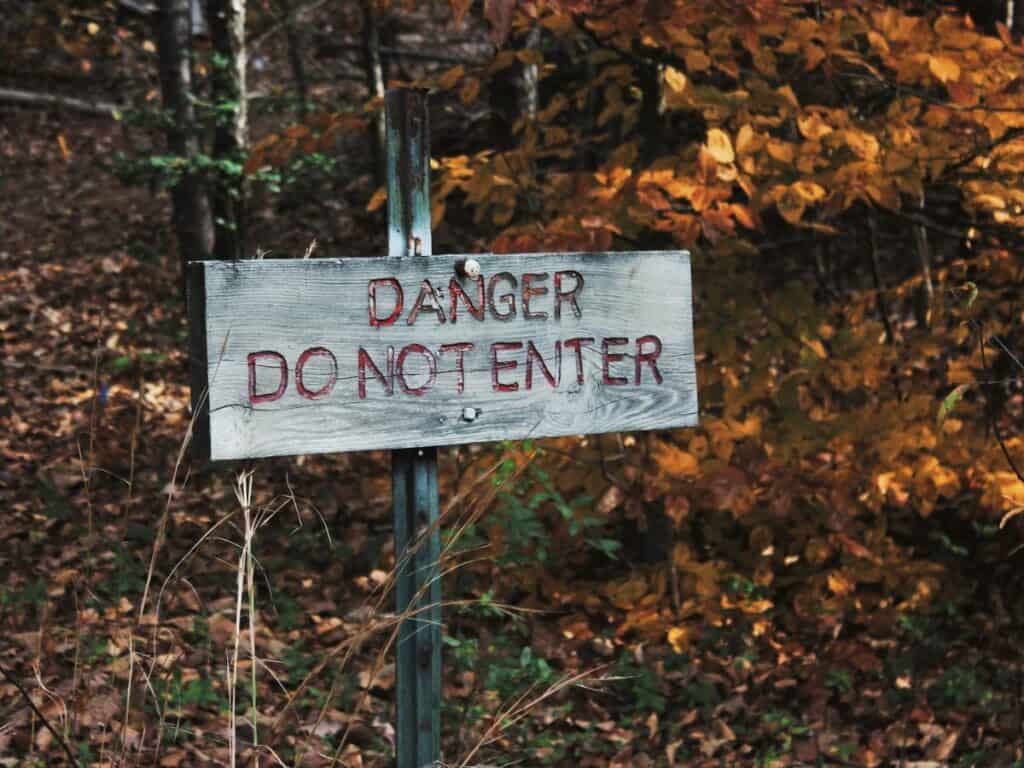
Wild camping is generally considered safe, provided that you take proper precautions and plan well for your adventure. Safety in wild camping revolves around having the right equipment, understanding the environment you’re entering, and adhering to established guidelines and local regulations. This means having weather-appropriate gear, knowing the terrain, and being aware of potential wildlife encounters.
Being informed about the region’s weather patterns and potential hazards is crucial. Preparing for sudden changes in weather, understanding how to navigate the area, and having emergency supplies on hand can make all the difference. Also, ensuring that someone knows your route and expected return time adds an extra layer of safety.
Furthermore, respecting local customs, seeking permissions when required, and following the principles of Leave No Trace contribute to both your safety and the preservation of the local environment.
So, while there are inherent risks in any outdoor activity, with careful preparation and adherence to best practices, wild camping can be a safe, enjoyable, and enriching experience.
How Do You Get Water When Wild Camping?
When wild camping, obtaining fresh water can be a critical aspect of your preparation and planning. Here’s how you can approach it:
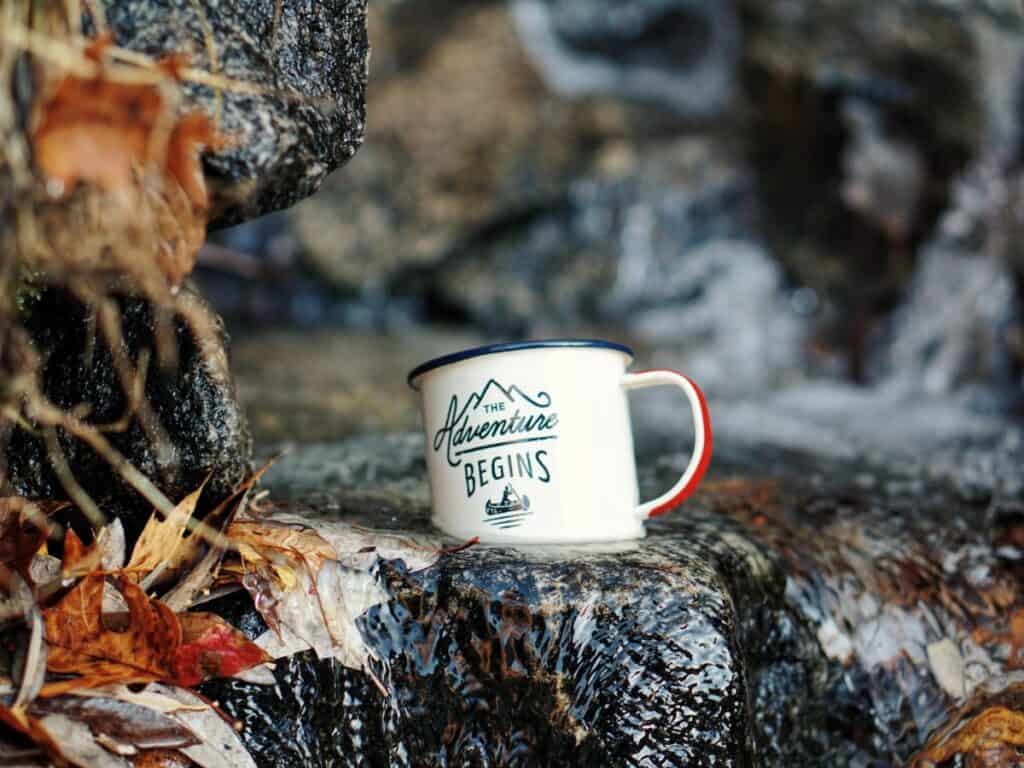
Bring Your Own: If you’re only camping for a short period or in an area where natural water sources are scarce, carrying your own water might be the best option. Ensure you have enough to cover your drinking, cooking, and basic hygiene needs.
Find Natural Sources: Many wild camping locations are near streams, rivers, or lakes. Look at maps and do some research before your trip to identify potential water sources.
Use a Water Filter: If you plan to use natural water sources, a portable water filter is essential to remove bacteria and other potential contaminants. There are various types of water filters and purifiers available, from pump-action filters to UV light pens.
Boil the Water: If you don’t have a filter, boiling the water for at least one minute (or three minutes at altitudes above 2,000 meters) can kill most pathogens. Remember that boiling doesn’t remove chemical pollutants, so it’s best to combine it with another method if you’re uncertain about the water quality.
Consider Water Purification Tablets: These can be a lightweight and simple option to purify water from natural sources. Follow the instructions on the packaging for the best results.
Avoid Contaminated Sources: Be mindful of the surroundings when collecting water. Avoid areas near agriculture or industrial activity, and always collect water upstream from where animals may have access.
Use Water Responsibly: When wild camping, it’s essential to minimize your impact on the environment. Use water sparingly and follow the Leave No Trace principles.
By thinking ahead and taking appropriate measures, you can ensure that you have access to safe and sufficient water during your wild camping adventure. Always have a backup plan in place, such as extra water or purification methods, in case your primary source falls through.
How Do You Poop When Wild Camping?
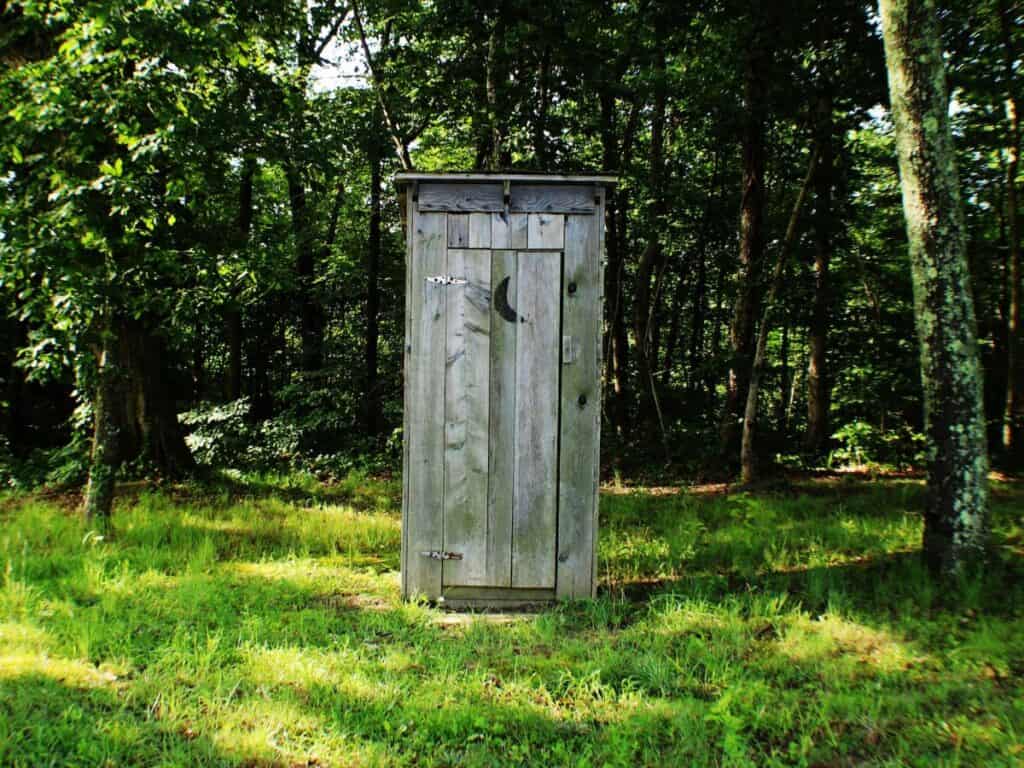
When wild camping, personal hygiene and responsible waste disposal are key to both your comfort and the preservation of the environment. When it comes to pooping while wild camping, planning and preparedness are essential.
If you’re in an area without toilet facilities, you’ll need to find a spot at least 30 meters (100 feet) from water sources, trails, and campsites to avoid contamination. Digging a small hole (known as a “cathole”) about 15-20 cm (6-8 inches) deep in organic soil is the standard practice. Use a lightweight trowel for this purpose, or find a stick or rock if you don’t have one.
After you’ve done your business, fill the hole with the soil you’ve dug up and pack out your used toilet paper in a sealed plastic bag, or use natural options like smooth stones or leaves. Some campers prefer to bring portable toilet systems or bags designed for human waste disposal, which can be a convenient option. More important than ever, remember the golden rules of wild camping, which guide you to minimize your impact and preserve the natural environment.
Final Thoughts
Wild camping in the UK is more than just a way to spend the night outdoors; it’s a chance to connect deeply with nature, experience breathtaking landscapes, and find a sense of peace away from bustling city life. Whether you’re a seasoned wild camper or planning your first expedition, the diverse terrain and unique locations across the UK offer something for every adventurer.
Having the right knowledge, equipment, and respect for the land can turn a simple night under the stars into an unforgettable experience. From understanding local laws to packing the perfect rucksack, it’s essential to be well-prepared. If you’re eager to delve deeper into wild camping, don’t miss out on my other articles that cover everything from essential gear to choosing the perfect spot. Explore guides like How to Pack a Backpack and Wild Camping Equipment to make sure you’re fully prepared for your next adventure.
Remember, wild camping is not just about setting up a tent; it’s about embracing the outdoor lifestyle, respecting nature, and creating memories that last a lifetime. So pack your bags, choose your destination, and let the adventure begin. Feel free to explore more articles about wild camping here for more tips, guides, and inspiration.
Happy wild camping!

About the Author
Steve Cleverdon is an adventure blogger dedicated to helping outdoor enthusiasts make the most of their outdoor experiences. With years of travel and many epic adventures including a 3000-kilometre solo hike across New Zealand, Steve has amassed practical knowledge on outdoor gear. You can learn more about his adventures here. Through expert reviews, recommendations, and guides, he equips his readers with the best gear for their next adventure. If you want to send Steve a quick message, visit his contact page here.

